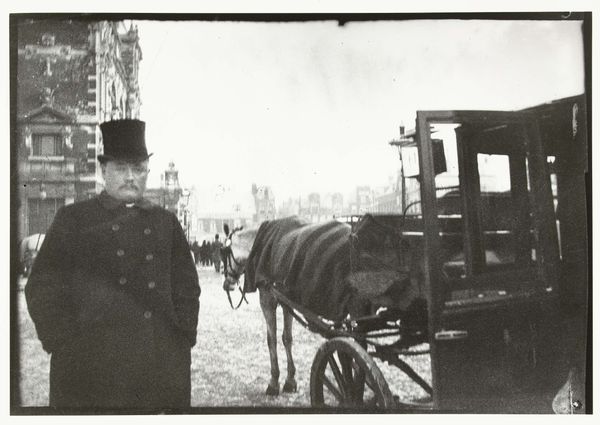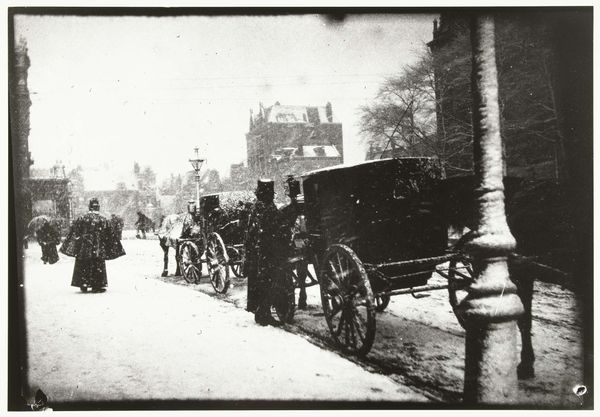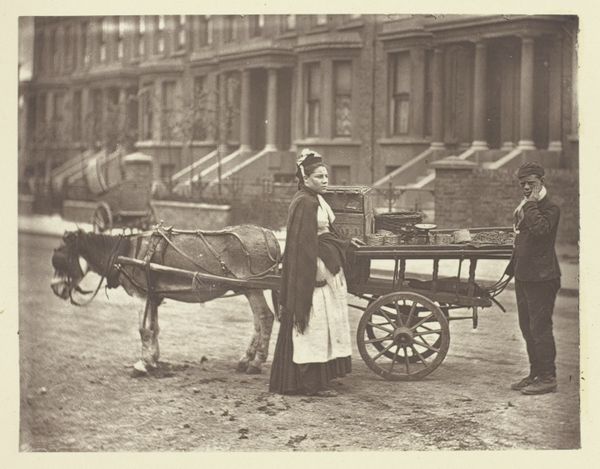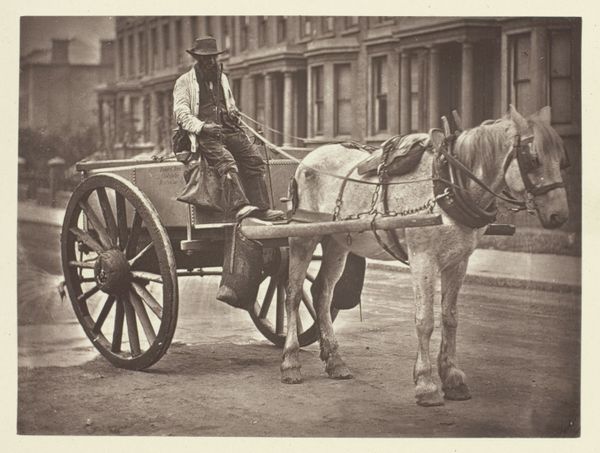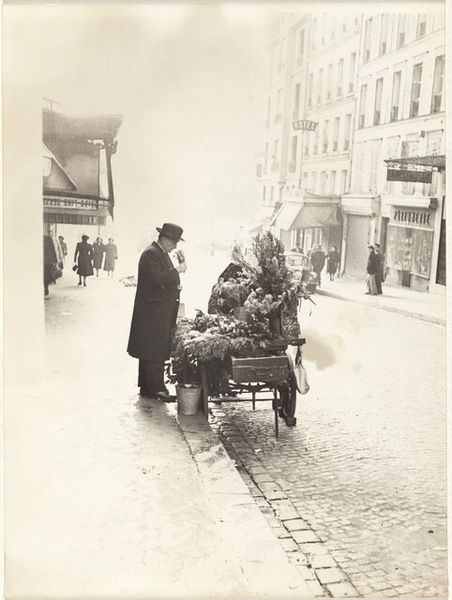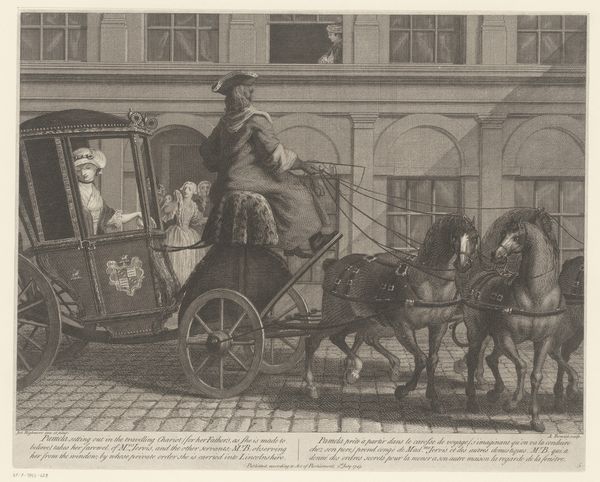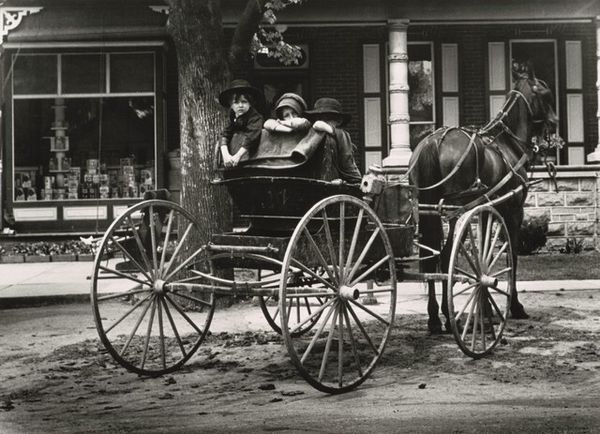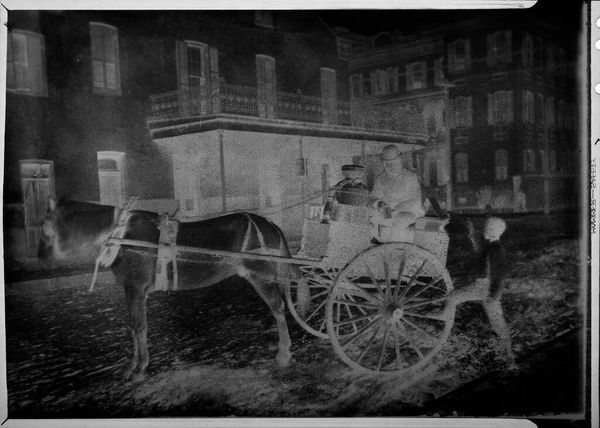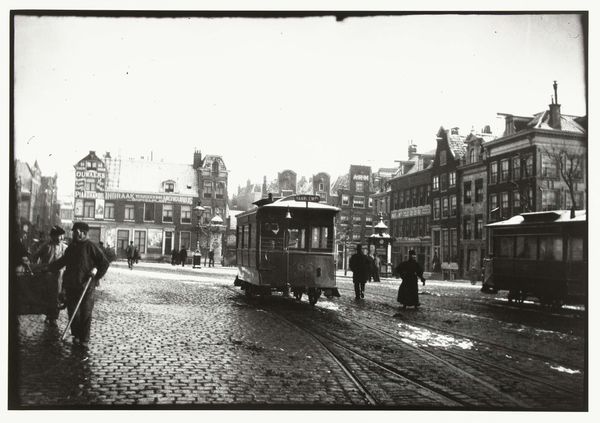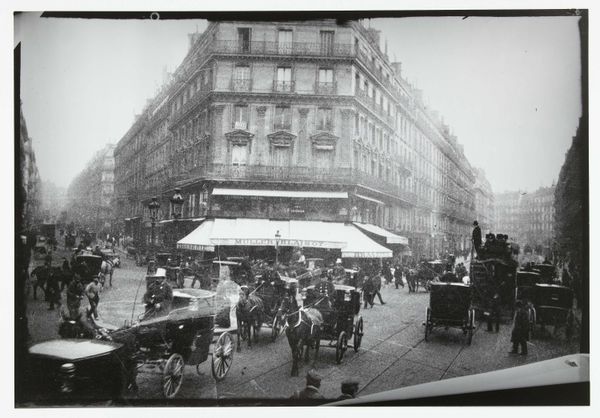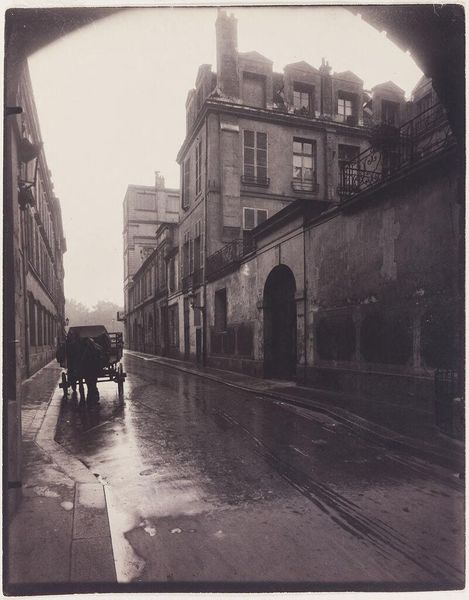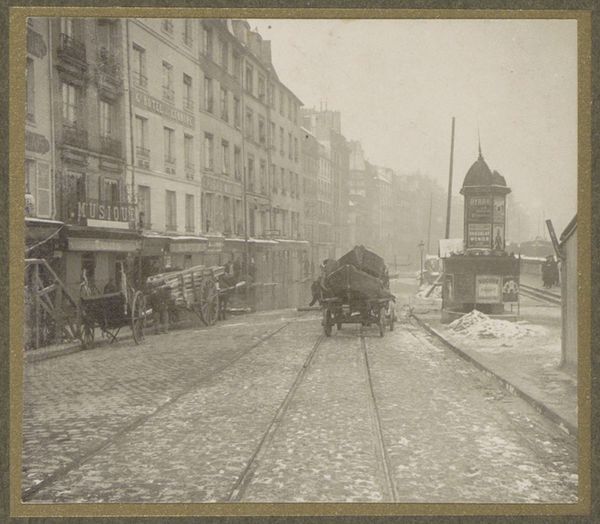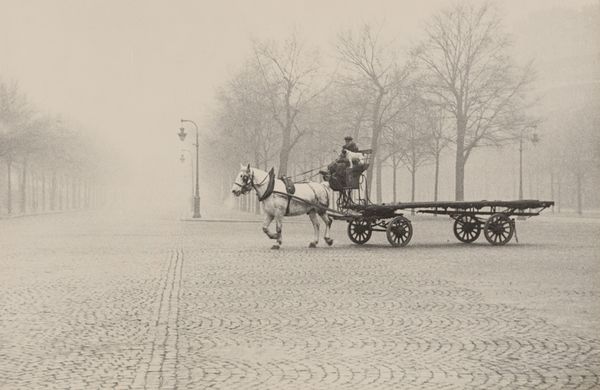
black and white photography
wedding photography
warm monochrome
outdoor loving
couple photography
nature friendly
monochrome photography
nature environment
outdoor activity
celebration photography
Dimensions: height 505 mm, width 403 mm, height 400 mm, width 276 mm
Copyright: Rijks Museum: Open Domain
Editor: This is George Hendrik Breitner's photograph, "Rijtuigen op de Dam in Amsterdam," taken sometime between 1890 and 1910. The monochrome palette gives it a beautifully nostalgic feel. What kind of commentary can you provide for it? Curator: The photograph’s social significance lies in Breitner's commitment to depicting the everyday life of Amsterdam. Unlike romanticized views of the city, Breitner showed the grit and bustle, capturing the atmosphere of a rapidly changing urban landscape. How do you think the photographic medium influenced this depiction? Editor: I imagine photography allowed him to capture fleeting moments of everyday life without idealizing them like paintings of the time might. The carriages and the figures almost feel like they are paused mid-motion. Curator: Precisely. It’s also essential to remember the context of photography's institutional acceptance at the time. Was it seen as art? By documenting urban life in this candid, almost documentary style, Breitner challenged existing notions of artistic subject matter and technique, thus shaping photography’s acceptance into the established art world. How might its presentation in a museum today affect how viewers understand this history? Editor: Good question. The image is removed from its initial social function as a news document; it becomes something elevated. The photo's placement in the Rijksmuseum seems to suggest photography's now unquestioned acceptance as an art form, further legitimizing its historical and cultural relevance. Curator: Exactly. And thinking about the "politics of imagery," the photo portrays Amsterdam as modernizing. Yet it also retains elements of older transport, presenting a visual record of a society in transition. Do you think this balancing act gives insight into how Breitner saw his contemporary society? Editor: Absolutely! It's almost like a time capsule, showing both the old and the new simultaneously. Thank you; it’s provided a fascinating insight. Curator: Indeed! The social context enhances our understanding of both the photograph and its creator. I learned a lot, too.
Comments
No comments
Be the first to comment and join the conversation on the ultimate creative platform.
